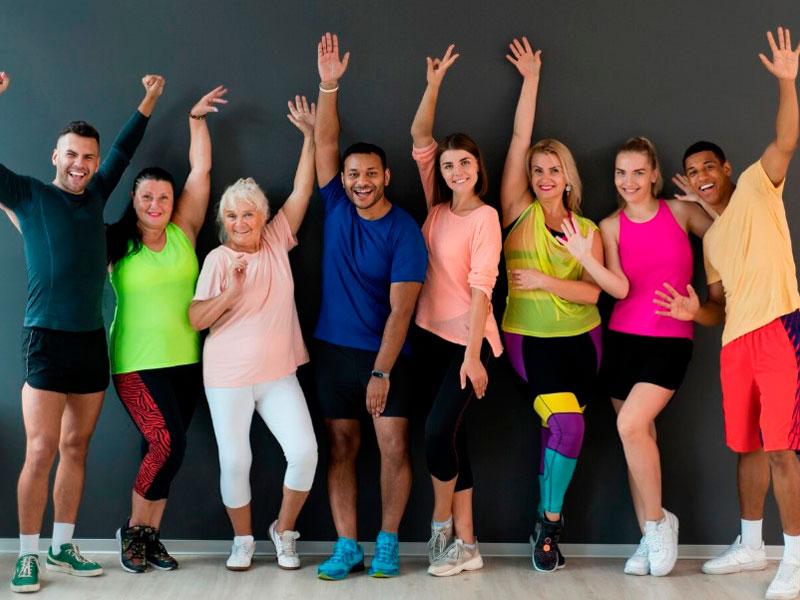Introduction
Physical activity is one of the most important things you can do for your health. It helps control weight, reduces the risk of chronic diseases, improves mental health and mood, and strengthens bones and muscles [[6]]. However, not all exercise is created equal — what works for a young adult may not be suitable for someone in their 50s or 70s.
This article explores how physical activity should be tailored to different life stages, with special attention to joint-friendly exercises, effective workouts for weight loss, and strategies to maintain overall fitness and mobility as we age.
Why Exercise Is Important at Every Age
- Youth (13–25 years): Encourages healthy growth, builds strong bones and muscles, and establishes lifelong habits.
- Middle-Aged Adults (26–59 years): Helps manage stress, prevents lifestyle-related diseases, and maintains metabolic health.
- Older Adults (60+ years): Improves balance, prevents falls, and supports independence and cognitive function [[7]].
Exercise for Young Adults (13–25 Years)
Young adults are generally more resilient and have higher energy levels, making this an ideal time to explore high-intensity and competitive sports. However, it’s also crucial to develop proper form and technique to avoid injuries that could affect future health.
Best Types of Exercise:
- High-Intensity Interval Training (HIIT): Great for fat loss and cardiovascular conditioning.
- Strength Training: Builds muscle mass, increases metabolism, and improves posture.
- Team Sports: Soccer, basketball, and volleyball offer both aerobic benefits and social engagement.
- Cardiovascular Activities: Running, cycling, swimming, and rowing improve heart health and endurance.
Focus Areas:
- Developing good movement patterns and core stability.
- Learning injury prevention techniques, especially for knees and shoulders.
- Building consistency and discipline in training routines.
Exercise for Middle-Aged Adults (26–59 Years)
As we age into middle adulthood, recovery slows down, and lifestyle factors like work and family responsibilities can make staying active more challenging. However, regular exercise becomes even more critical to counteract sedentary behavior and prevent chronic illness.
Best Types of Exercise:
- Resistance Training: Preserves muscle mass, boosts metabolism, and supports joint health.
- Low-Impact Cardio: Walking, elliptical machines, or stationary bikes are gentler on joints while still improving cardiovascular fitness.
- Yoga or Pilates: Enhances flexibility, core strength, and stress relief.
- Functional Training: Focuses on movements used in daily life to improve balance and coordination.
Focus Areas:
- Managing stress through mindful movement practices like yoga or tai chi.
- Prioritizing rest and recovery to avoid overtraining.
- Combating desk-bound lifestyles with short bursts of movement throughout the day.
Exercise for Older Adults (60+ Years)
For older adults, the goal of exercise shifts toward maintaining independence, preventing falls, and managing chronic conditions such as arthritis, osteoporosis, and hypertension [[8]].
Best Types of Exercise:
- Balance and Flexibility Exercises: Tai chi, chair yoga, and stretching routines help reduce fall risks.
- Walking: A simple yet highly effective low-impact aerobic activity.
- Strength Training: Using light weights or resistance bands to maintain muscle tone and bone density.
- Water Aerobics: Offers full-body resistance without putting pressure on the joints.
Focus Areas:
- Avoiding high-impact activities that strain the knees, hips, and spine.
- Incorporating daily movement to combat stiffness and promote circulation.
- Working with healthcare professionals to tailor routines based on individual needs and limitations.
Joint-Friendly Exercises: Why They Matter
Joint pain and stiffness become more common with age, especially in the knees, hips, and lower back. Choosing the right type of exercise can help protect these areas from unnecessary wear and tear.
Exercises That Are Gentle on Joints:
- Swimming and Water Workouts: Buoyancy reduces stress on the joints while offering resistance for strength training.
- Cycling (stationary or outdoor): Low impact and great for leg strength and cardiovascular health.
- Elliptical Machines: Provide a smooth motion that mimics running without the joint shock.
- Walking: Especially on soft surfaces like grass or dirt trails to minimize impact.
- Yoga and Stretching: Promotes flexibility and joint mobility without compression.
Exercises to Avoid or Modify:
- Jumping or plyometric exercises
- Deep squats or lunges without proper support
- Running on hard surfaces
- Heavy weightlifting with poor form
Exercise for Weight Loss vs. Maintenance
Whether your goal is to lose weight or maintain your current shape, choosing the right kind of physical activity makes all the difference.
For Weight Loss:
The key to losing weight through exercise is to create a calorie deficit — burning more calories than you consume. Combining cardio with strength training tends to yield the best results.
- Cardiovascular Exercise: Aim for 150–300 minutes per week of moderate-intensity activity like brisk walking, jogging, or cycling [[9]].
- Interval Training: Alternating between high and low intensity boosts fat burning and keeps metabolism elevated after workouts.
- Full-Body Strength Training: Increases lean muscle mass, which raises resting metabolic rate.
For Weight Maintenance:
Once you’ve reached your desired weight, focus on consistency and lifestyle integration to keep it off long-term.
- Daily Movement: Incorporate walking, taking the stairs, or doing household chores regularly.
- Regular Strength Sessions: At least two times per week to preserve muscle and support metabolism.
- Mindful Activity: Yoga, dance classes, or group walks provide enjoyment and motivation to stay active.
Conclusion
Physical activity is a lifelong journey that evolves with us. From building strength and stamina in youth, to preserving mobility and independence in older age, exercise plays a vital role in our overall well-being [[6]].
By understanding how our bodies change and adapting our routines accordingly, we can stay active, healthy, and pain-free for decades to come. Whether your goal is weight loss, joint protection, or simply feeling better every day, there’s an exercise plan that’s perfect for you — no matter your age.

